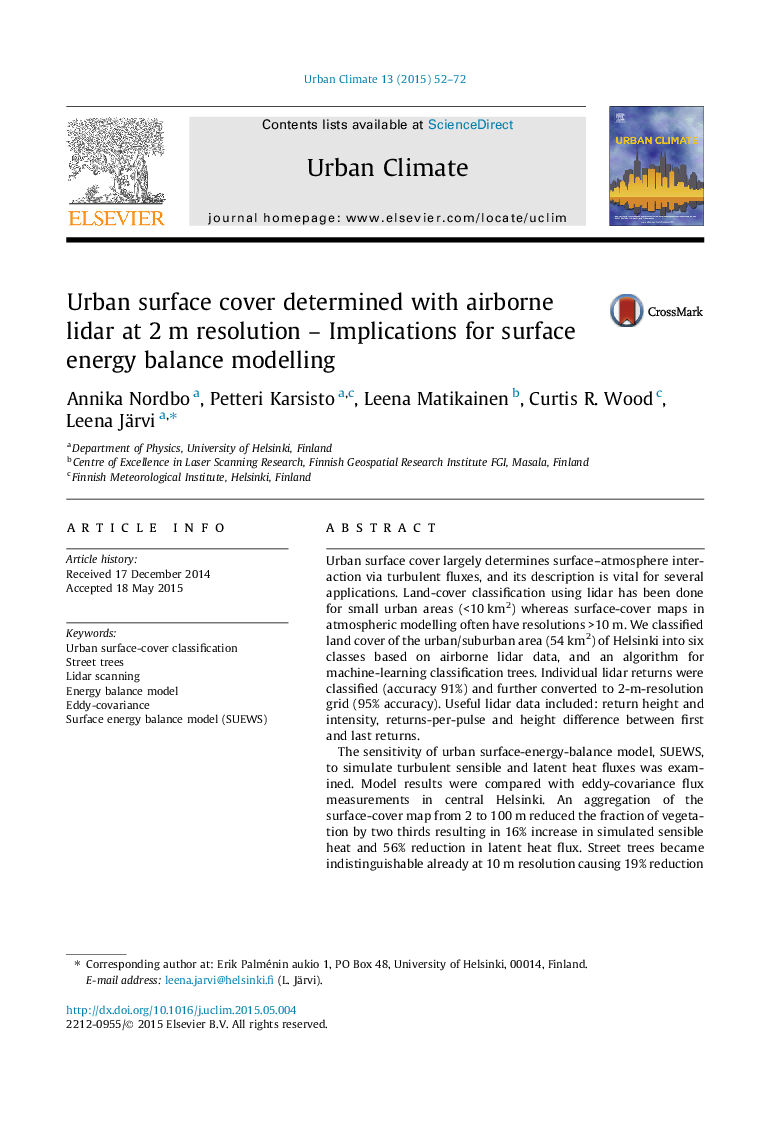| Article ID | Journal | Published Year | Pages | File Type |
|---|---|---|---|---|
| 143724 | Urban Climate | 2015 | 21 Pages |
•Lidar returns from a 54 km2 urban area were classified into 6 surface cover classes.•Decision tree classification of lidar data alone led to 91% accuracy.•The commonly used 10-m map resolution is still not fine enough to resolve street trees.•Maps of 10-m resolution already cause a 19% error in modelled latent heat flux.
Urban surface cover largely determines surface–atmosphere interaction via turbulent fluxes, and its description is vital for several applications. Land-cover classification using lidar has been done for small urban areas (<10 km2) whereas surface-cover maps in atmospheric modelling often have resolutions >10 m. We classified land cover of the urban/suburban area (54 km2) of Helsinki into six classes based on airborne lidar data, and an algorithm for machine-learning classification trees. Individual lidar returns were classified (accuracy 91%) and further converted to 2-m-resolution grid (95% accuracy). Useful lidar data included: return height and intensity, returns-per-pulse and height difference between first and last returns.The sensitivity of urban surface-energy-balance model, SUEWS, to simulate turbulent sensible and latent heat fluxes was examined. Model results were compared with eddy-covariance flux measurements in central Helsinki. An aggregation of the surface-cover map from 2 to 100 m reduced the fraction of vegetation by two thirds resulting in 16% increase in simulated sensible heat and 56% reduction in latent heat flux. Street trees became indistinguishable already at 10 m resolution causing 19% reduction in modelled latent heat flux. We thus recommend having surface-cover data with 2 m resolution over cities with street trees, or other patchy vegetation.
